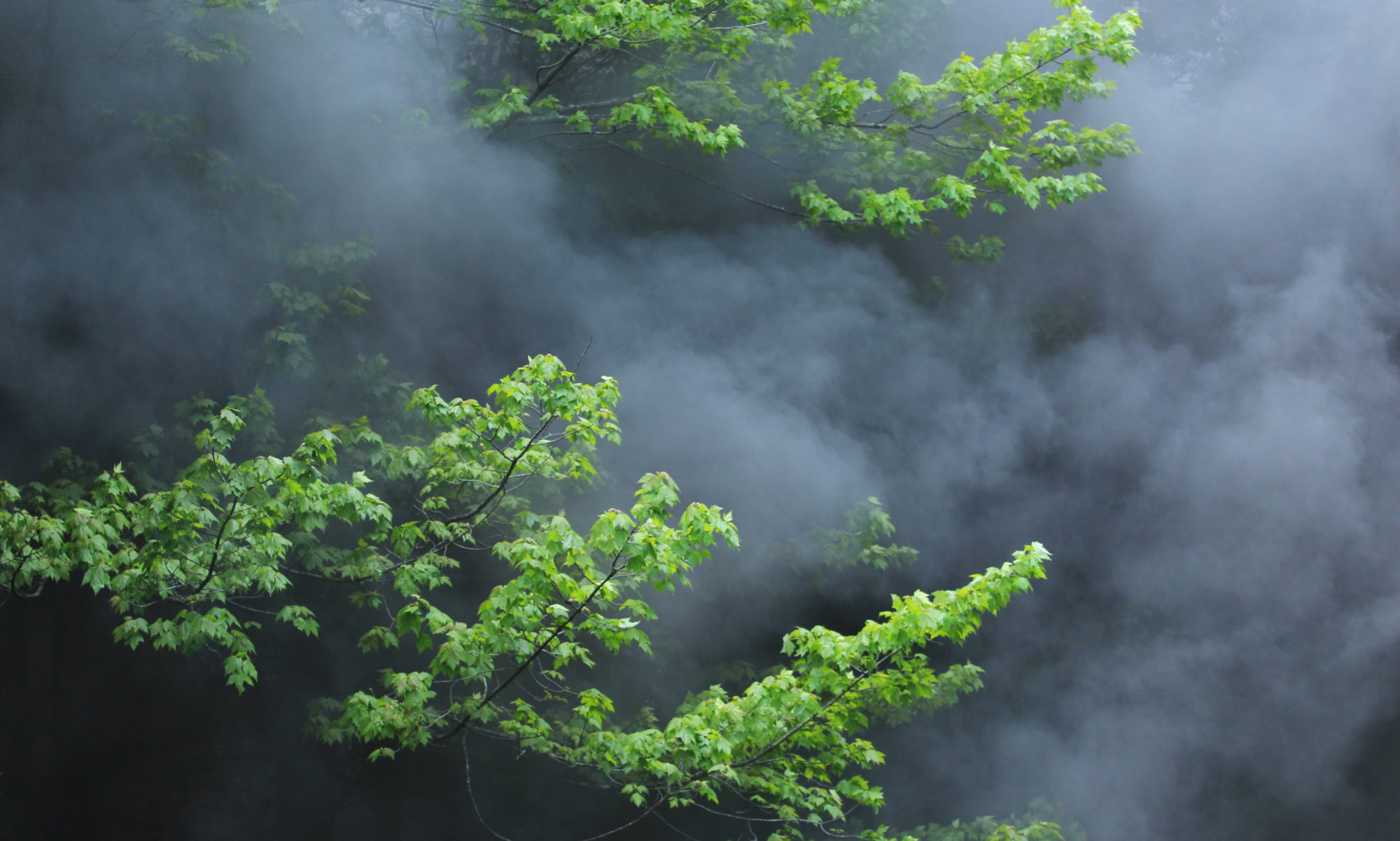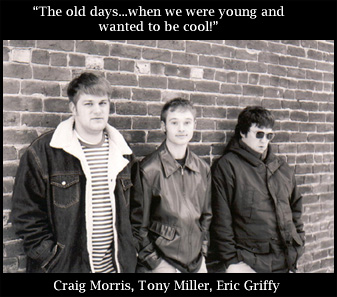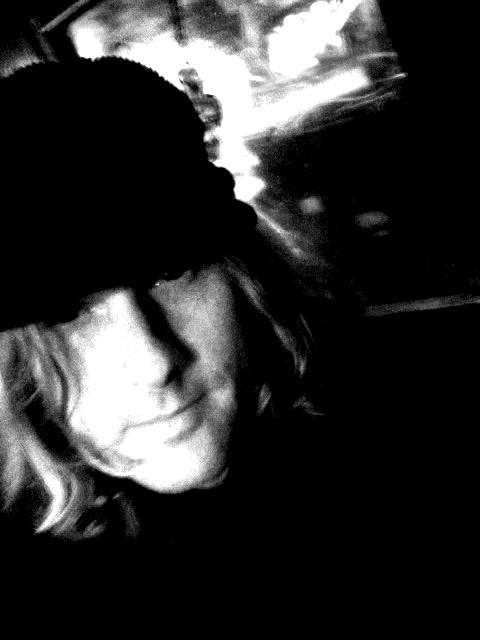This interview which I conducted with Tony Miller and Craig Morris of the Lexington, KY band Ideal Free Distribution was first posted at Optical Atlas on February 6, 2007.
***
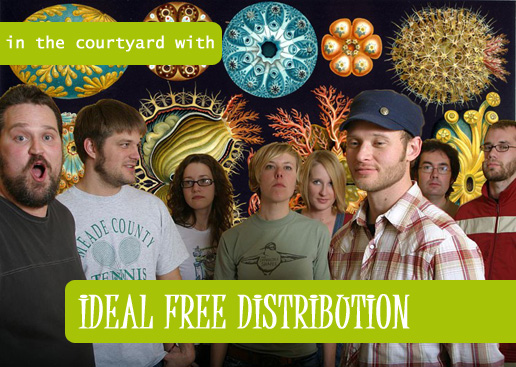
Early last year, around the time when Optical Atlas was just coming into creation, a pair of MP3s began to spread around the music blogs accredited to one “Ideal Free Distribution.” Not a lot was known about the band, except that they were from Kentucky and Robert Schneider of The Apples in Stereo was helping to mix their new record. The MP3s–which might be referred to as the “Apples and Oranges b/w Saturday Drive” single–garnered instant enthusiasm. The sound called to mind the Kinks and the Zombies, and yeah, a little Syd Barrett too. Now an established part of the Lexington scene, along with the Apples, High Water Marks, and Thee American Revolution (in which IFD member Craig Morris plays alongside Schneider), they’ve just released their self-titled debut album on Happy Happy Birthday to Me: 14 tracks of virtuoso melody, harmonies, and mellotron–more on the latter in just a bit. Morris, who wrote the majority of the album’s songs, provides guitar, drums, organ, and piano; he’s joined by lead vocalist Tony Miller and Eric Griffy on bass and electric guitar. (In the band’s live incarnation, they’re joined by Marci Schneider, Shelly Morris, Samantha Herald, Joe Drury, and Mike Grote.) On the strength of their new album alone, they’ve just been invited to play this year’s SXSW Festival. Both Craig Morris and Tony Miller agreed to a joint interview to mark the general public’s introduction to the band, a band which has actually been gestating as a bedroom recording project since 1997–which partially explains why the album is so polished and intricately worked out.
So how did the band come together? It sounds like it was in gestation for a long time, and started as bedroom recordings–is that accurate?
CRAIG MORRIS: Yes, we began recording at Eric’s parents house in 1997. We started off as a pretty jangly bunch, pretty heavily influenced by the early Who and the Stone Roses. As time progressed, we began doing more elaborate overdubs to add more depth to the sound. A lot of the stuff from this time is really fun. Some of it is wretched.
Where was this, in Lexington?
CM: No, this is our hometown of Benton, KY.
TONY MILLER: Good ol’ Benton, KY…home of “Tater Day.” Craig and Eric lived right next to each other growing up (parents still do) and I lived about 2 miles away. Craig and Eric are cousins and he used to hang out at the Griffy’s with Eric’s younger brother Alex. Eric used to bully them into pretending they were in a metal band by using tennis rackets as guitars. Craig forgot to mention how intimidated we initially were by Eric. He was a few years older and was a high school football jock, plus he had been playing in metal bands for years (we were afraid of metal too).
The first time we went down to his house to mess around, he needed to go to the store to get cigarettes, so we rode with him…he had the front floor board full of cassettes that were his own 4-track recordings. He played a few that he considered trash and it was the best music Craig and I had ever heard. That was the initial “one-up” that got us thinking harder about songwriting. Shortly thereafter, Craig retailiated with the most brilliant two pop songs ever and we’ve been competing unofficially ever since. Eric and I are a little bit behind considering the effort that Craig put into the new album.
What kind of equipment were you using back then, and was there a moment when you purchased some recording equipment that made you feel you were beginning to take serious steps to make this a recording project?
CM: We started with a Marantz cassette 4 track and a Shure SM-57. It’s hard to botch things with a 57. We really had no other gear besides my Telecaster and Fender VibroChamp, Tony’s guitar at the time and Eric’s bass. We really thought we hit the big leagues when we purchased a Roland VS880 digital 8 track. We got quite a bit more ambitious with that thing since it had more tracks, and there wasn’t as much signal loss when you bounced tracks together onto one track, like with the cassette. About 2001, I bought an M-Audio Omni computer interface and we started recording on computer. We also started getting cheap RODE and Audio Technica condenser mics, which gave us a few more options soundwise. A word to anyone reading who might be getting into recording: We do NOT use ProTools! The Windows version is the most user unfriendly program ever. Cubase, Sonar, and Vegas are much easier to use and are more likely to promote creativity rather than hold you back. To get ready for recording our next record, I’ve purchased some awesome mics and built a bunch of cool mic pres. I’ve also got a couple snazzy old compressors in the studio right now.
TM: As cheesy as it sounds now…Eric bought the most generic condenser mic around ’98 (seems like it was 9-volt powered) that, with the suspension mount, made me feel like I was Sam Cooke or something.
So when did Ideal Free Distribution begin playing live?
CM: Only when we had to. When a track was appearing on a Lexington compilation.
TM: It’s not like we didn’t try though. The odds of three musicians, with leanings toward 60’s influenced pop, finding each other in western Kentucky were astronomical…we weren’t so lucky with a drummer. We went through six drummers trying to put together a live act with no luck. It was like Spinal Tap or something…they just kept disappearing. Of course, I’m not sure where we planned on playing even if we would have gotten our shit together. There wasn’t exactly a “scene” in our area. I moved to Lexington after being away at grad school and put together a band here (The Melody Function) because I was dying to perform. Those guys became part of the Ideal Free Distribution when the UK radio station (WRFL) asked us to play a show in association with a local artists CD compilation. It was great! Our friend Robert Schneider played guitar on a couple of songs. We can directly attribute his friendship and eternal cheerleading to all the attention we’ve gotten so far.
The impression I get is that you perform live out of necessity, and you’re more concerned with how you sound on the album, is that correct?
CM: That isn’t entirely true. It’s just such an effort to get an eight piece band together that lives four hours apart.
TM: We like performing, but after 10 years of recording (and no performing), the bedroom collaborations are our first love.
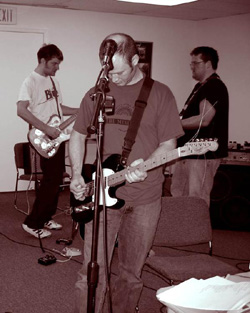
How did you meet Robert Schneider? I’m aware that he’s married to Marci, but did you naturally come across each other as part of the Lexington scene? And for that matter, what was it like to work with Robert and Jason NeSmith on the record?
TM: Marci started dating Robert right around the time we finished the album. I met him at a Yo La Tengo concert around that time and then hung out with him shortly thereafter at one of Marci and Sammy’s (my girlfriend and bandmate) parties. I think that was right after he heard one of our older songs (“Kodak Stare”) that was in Marci’s music collection. It was overwhelming how much he gushed about that song. We had long ago given up on getting anyone to listen to our music and in no way did we try to get Marci to push it on him. I guess Craig got him a copy of the album shortly thereafter, which ultimately led to his barrage of promotional cheerleading, and our signing to HHBTM, and the mixing of our album.
It was so surreal to have Robert sitting in Craig’s garage studio twisting the knobs on something we recorded! We of course are big Apples/E6 fans so it was really mind-blowing. I always remember the first time I heard the Apples around ’99. Craig got a copy of Wallpaper Reverie and I remember being initially pissed off! I thought we had a completely original 60’s influenced sound and then we discovered that there was an entire collective out in Denver doing the same thing. It was initially disappointing, but then we became fans. To have become such good friends now with Robert and some of the other E6ers is very cool.
CM: I met Robert because he and Marci (my sister) started dating. Otherwise, living three hours away, I wouldn’t have had any reason to meet and get to know Robert. I have a conspiracy theory about Robert and the music though. I think Marci was intentionally listening to our best song at the time, “Kodak Stare,” because she knew if he heard it, he would freak out. She claims it was a coincidence, but either way, I suppose it worked. It was great working with Robert throughout the recording and especially the mixing process. I now understand how to use compression and EQ, and a long list of invaluable information. Playing with him in Thee American Revolution, I learned how much fun could be a part of rocking out. Jason is such a cool guy because he didn’t run our record through a mackie console and a walkman for mastering as he threatened. I gave that guy HELL one night after the American Revolution opened for Casper and the Cookies.
One of the things I really enjoy about the album is the diversity of the subject matter, from pure pop songs to the dark storytelling of “New Madrid, 1811” to the political commentary of “Someone’s Gonna Die.” It seems like there’s nothing out of bounds for the band to tackle, but they’re all recognizably from the same album and band–they connect and have the same strong voice. Can you specifically address those two songs and what the inspiration was?
CM: Sure. On “New Madrid,” growing up in western KY near the New Madrid Fault, we are always faced with the threat of another catastrophic earthquake. Some non-scientist nut said we would have one on a specific day in the early 90’s, and everybody around was let out school and stuff! It was hilarious. But seriously, there are hundreds of rumors about the 1811-1812 earthquakes that float around our part of the country, so I began reading primary source documents such as personal journals of folks that were there to try to learn what it was really like. That’s what “New Madrid” is based on. “Someone’s Gonna Die” was me sitting around in ’03 getting pissed off at the blind stupidity of people being so idiotically patriotic (I’m patriotic, I like being American, I cheer for the US Olympic team and stuff, but I won’t cheer for a war that I don’t agree with). It was obvious to me and a lot of people at the time that the Bush administration was dying to have the fake war in Iraq (the premise behind the war being fake, not that there aren’t people dying there). In Kentucky, every idiot had everything they owned plastered with flag stickers and flag this and flag that. It struck me that any time when the masses of flags come out, some poor bastard is going to have to die for it.

Do you write songs collaboratively, or pretty much on your own before taking it into the group to be worked on?
CM: It depends. There were situations on the record were I let Tony finish lyrics or totally write lyrics. Eric usually writes like this too. He is the master of recording brilliant fragments, and me and Tony finish the songs. Tony usually finishes his songs by himself.
TM: We’ve never sat down like the Beatles and wrote songs together. In my opinion, our best songs are group efforts though…like when Craig and/or Eric write, arrange, and record a song without any vocal melody or lyrics and I get to sit down and take it from there. “Kodak Stare,” that’s currently on the MySpace page, is probably the best example of that.
It mentions in your bio that you began layering 30-40 tracks on a song when you began work on the album. Was it always a matter of getting the song to sound like how you heard it in your head, or do you feel that you experiment until you can arrive at something unique and interesting? It’s certainly a very dense and exciting record to listen to.
CM: A lot of it was in my head and had to be recorded, but there are some moments that were great experiments/accidents. There’s a break in “New Madrid” where there’s a slide guitar and synths flying all over the place. That was a wonderful accident.
There are mellotron sounds all over the record, and it’s astonishing the associations they bring–I think “Strawberry Fields Forever” whenever I hear it, and it’s nice to have a little flavor of that on tracks that seem pretty diverse in terms of influences–Love, Zombies, Kinks, and MC5 all seem to be inspirations at various moments. Are you using a real mellotron?
TM: No, it’s a computer program. From what I’ve read about the real things, we would never buy one. We couldn’t afford to maintain it. The program that we use is actual wav file recordings of real mellotrons…so it’s like a sample of a sample (being that a mellotron plays samples of recordings from real instruments/voices/etc.). As a result, the program is around 3gb in size.
Does that make it as cool as owning a real mellotron? No. No way in hell. Craig played all of the trons on the album, but I’ve since become addicted to it…sitting in my basement, losing hours of my life, playing various mellotron meanderings. God, what happened to my life? I used to go outdoors. As far as the sound goes…geez, what’s not to like.
CM: It’s all samples from various sources. I bought some samples off people from mellotron internet groups, and from other places. If I actually owned the mellotron and all the tape banks I used on the record, it would have cost more than $10,000. So samples were the only option. I hate the way strings are recorded today, they sound so sterile and fake. The mellotron sounds like there are ghosts involved. Robert and I have threatened to buy one if we make any money off the American Revolution, though. Tony gave a nice music-with-mellotron list for the You Ain’t No Picasso blog. What we use isn’t an emulator, but sample banks that have a recording of every key of the mellotron, so when playing, we are triggering the samples of an actual tron. There a a “virtual instrument” called the MTRON which has a bunch of these sample banks and has a few more features that’s really neat as well. I guess it comes down to preference of sound. Do I prefer the sound of the strings on “November Rain” or Odessey and Oracle or Village Green? Of course I used about twenty different mellotron tape banks on the record too.
Do you have any grand ideas for the next record, and will you begin working on it this year?
TM: We’ve been recording the new material for a while now. Keep in mind, the recording of our “new” album has been finished for around 3 years. We’ve all three been fairly prolific since then. I seriously think we have 40 or 50 new songs, a great deal of which we’ve already recorded. We plan on recording them all and then sitting down to see what we have. The best change that I’ve heard is our drum sound…they have balls now. Craig’s new studio, mics, and preamps have really made a difference.
CM: I don’t imagine the next record as being much different sonically, except maybe a touch heavier. Lyrically, I’m branching out a bit into areas not covered on the first.
What’s a good album you’d recommend, which you count as an influence, that not too many people have heard of?
TM: I’ve been obsessing over a Del Shannon album (Home and Away) from ’67 that was produced by Andrew Loog Oldham. Apparently, Oldham wanted to record the British version of Pet Sounds and pulled Shannon in for vocal duties. There are some very beautiful things on there. John Paul Jones is a standout as the session bass player. This and weird Ennio Morricone recordings have been big influences on me lately.
CM: Assuming everybody’s heard the Kinks’ Arthur, then I’ve got a stash of bootleg live Yardbirds material with Jimmy Page. Some of it is extremely moving, dark psychedelia. Music that’s totally on the edge of collapse and sanity. The Del Shannon record is very good!
* * *
